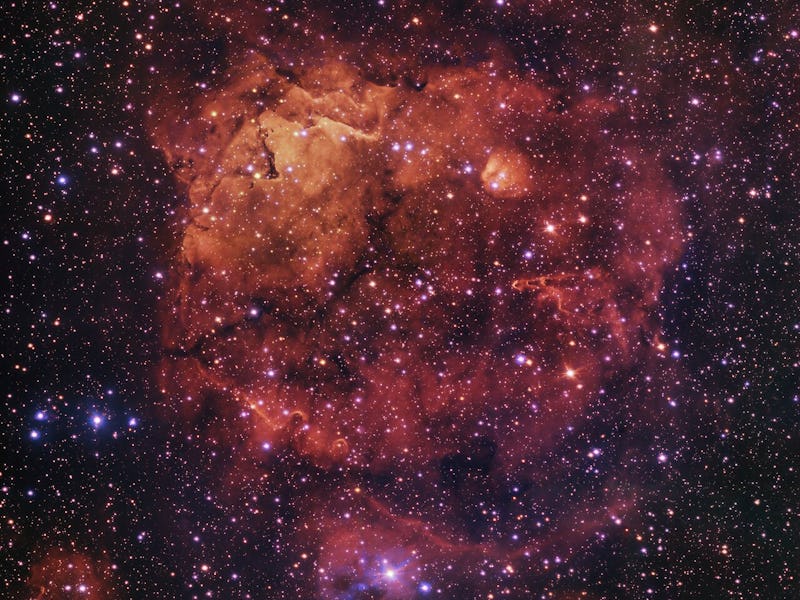Astronomers Just Discovered a Bizarre, Cat-Shaped Nebula. Can You Spot It?
The European Southern Obseratory's VLT Survey Telescope captured this image of a star-forming nebula Sh2-284.

Astronomers have finally found Ceiling Cat in a nebula 15,000 light years away.
Who among us hasn’t stared up at the sky, searching for shapes in the clouds? If you’ve got a powerful enough telescope, you can play the same game in space. The nebula Sh2-284 looks a bit like a cat, grinning crookedly at Earth. It’s basically a 150-light-year-wide version of the classic Ceiling Cat meme — or maybe it’s a cosmic tribute to Félicette, the first cat in space.
The European Southern Observatory’s VLT Survey Telescope recently captured this image from its perch on a Chilean mountaintop, and ESO released the image on June 27.
“Can Haz Ionized Hydrogen?”
This nebula is 150 light years wide, meaning it takes light 150 years to travel from one side to the other.
Known as Sh2-284, this cat-shaped nebula is a region of dense gas and dust where new stars are forming. One especially bright cluster of newborn stars, called Dolidze 25, blazes at the heart of the brightest area of the nebula (look just beneath the cat’s nose). These young, massive stars blast nearby space with powerful stellar winds and intense radiation, stripping electrons away from the surrounding clouds of hydrogen. That ionized, or electrically charged, hydrogen gas glows bright orange and red in the telescope image — in other words, that’s why Sh2-84 looks like a ginger cat.
Stellar winds from Dolidze 25 also push gas away from the cluster, carving out a hollow space in the center of the nebula and piling up wind-driven gas into denser clumps which might eventually spawn new stars. If you look closely around the star cluster, you can see pillars of denser gas and dust that were sturdy enough not to be eroded by stellar winds. These pillars will spawn their own clusters of bright stars.